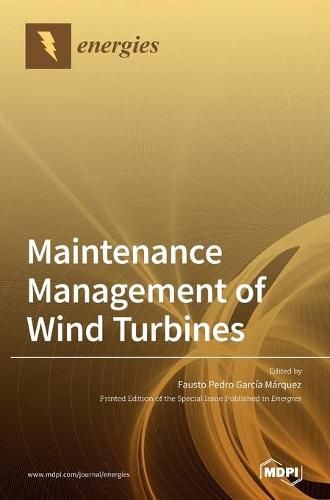Readings Newsletter
Become a Readings Member to make your shopping experience even easier.
Sign in or sign up for free!
You’re not far away from qualifying for FREE standard shipping within Australia
You’ve qualified for FREE standard shipping within Australia
The cart is loading…






This title is printed to order. This book may have been self-published. If so, we cannot guarantee the quality of the content. In the main most books will have gone through the editing process however some may not. We therefore suggest that you be aware of this before ordering this book. If in doubt check either the author or publisher’s details as we are unable to accept any returns unless they are faulty. Please contact us if you have any questions.
Maintenance Management of Wind Turbines considers the main concepts and the state-of-the-art, as well as advances and case studies on this topic. Maintenance is a critical variable in industry in order to reach competitiveness. It is the most important variable, together with operations, in the wind energy industry. Therefore, the correct management of corrective, predictive and preventive politics in any wind turbine is required. The content also considers original research works that focus on content that is complementary to other sub-disciplines, such as economics, finance, marketing, decision and risk analysis, engineering, etc., in the maintenance management of wind turbines. This book focuses on real case studies. These case studies concern topics such as failure detection and diagnosis, fault trees and subdisciplines (e.g., FMECA, FMEA, etc.) Most of them link these topics with financial, schedule, resources, downtimes, etc., in order to increase productivity, profitability, maintainability, reliability, safety, availability, and reduce costs and downtime, etc., in a wind turbine. Advances in mathematics, models, computational techniques, dynamic analysis, etc., are employed in analytics in maintenance management in this book. Finally, the book considers computational techniques, dynamic analysis, probabilistic methods, and mathematical optimization techniques that are expertly blended to support the analysis of multi-criteria decision-making problems with defined constraints and requirements.
$9.00 standard shipping within Australia
FREE standard shipping within Australia for orders over $100.00
Express & International shipping calculated at checkout
This title is printed to order. This book may have been self-published. If so, we cannot guarantee the quality of the content. In the main most books will have gone through the editing process however some may not. We therefore suggest that you be aware of this before ordering this book. If in doubt check either the author or publisher’s details as we are unable to accept any returns unless they are faulty. Please contact us if you have any questions.
Maintenance Management of Wind Turbines considers the main concepts and the state-of-the-art, as well as advances and case studies on this topic. Maintenance is a critical variable in industry in order to reach competitiveness. It is the most important variable, together with operations, in the wind energy industry. Therefore, the correct management of corrective, predictive and preventive politics in any wind turbine is required. The content also considers original research works that focus on content that is complementary to other sub-disciplines, such as economics, finance, marketing, decision and risk analysis, engineering, etc., in the maintenance management of wind turbines. This book focuses on real case studies. These case studies concern topics such as failure detection and diagnosis, fault trees and subdisciplines (e.g., FMECA, FMEA, etc.) Most of them link these topics with financial, schedule, resources, downtimes, etc., in order to increase productivity, profitability, maintainability, reliability, safety, availability, and reduce costs and downtime, etc., in a wind turbine. Advances in mathematics, models, computational techniques, dynamic analysis, etc., are employed in analytics in maintenance management in this book. Finally, the book considers computational techniques, dynamic analysis, probabilistic methods, and mathematical optimization techniques that are expertly blended to support the analysis of multi-criteria decision-making problems with defined constraints and requirements.